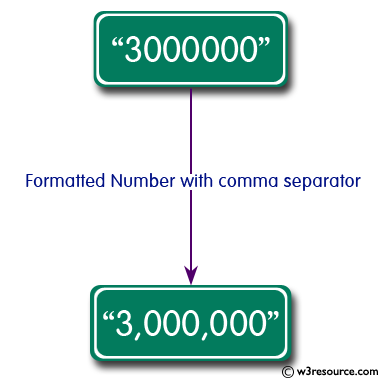

- Regex for number with commas dots and prantesis code#
- Regex for number with commas dots and prantesis plus#
We can immediately spot that the optional sign is a common start to both definitions, meaning it can be matched in both expressions. This then completes the second part of the definition, and will match “.2” and any of it’s signed counterparts.Īnd now we must combine the first and second part of the definition into one. We need at least one of these characters, so we can add the one-or-more quantifier (+) behind it: / ? \. Edit with RegexityĪnd finally, this can be followed by a range of numeric characters (0-9). We don’t add a quantifier in this case, which shows that the period is definitely required in this definition: / ? \. Once again, we need to escape the period character with a backward slash in front of it. This can be followed by an optional period (.) or decimal point. In the same way as above, we can start with an optional (zero or one) sign: / ? / Edit with Regexity Now for the second part (we’ll combine them at the end). This will now match numbers like “1”, “1.2”, and “1.” as well as their signed counterparts (with a + or – in front). So far so good for the first part of the definition. We again add these in square brackets to indicate that we’ll accept any character in this range, and we also add the zero-or-more quantifier (*) behind it to show that we’ll accept zero or more of them: / ? + \. ? / Edit with RegexityĪnd finally the decimal sign can be followed by zero or more number characters from 0 – 9.


This period character is optional, so we need to quantify it with a zero-or-one quantifier (?) behind it: / ? + \. A period is a reserved character in regular expression syntax and thus we should escape it with a backward slash preceding the period: / ? + \. This can be followed by an optional period (.) or decimal sign. We can quantify how much of these characters we want by adding a one-or-more quantifier (+) sign behind the square brackets. The optional sign can be followed by any numeric characters (including 0), so we add a character range (0-9) in square brackets to show that we can math any character in that range: / ? / Edit with Regexity However, we need to add the zero-or-one quantifier (?) to show that we can have either zero or one of these signs: / ? / Edit with Regexity We place the + and – sign in square brackets to show that we can match either one of them. At the start of the expression, we can have an optional sign (either + or -): / / Edit with Regexity Let’s work on the first part of the definition. Now let’s start converting these guidelines into a valid regular expression.ĪLSO READ: Regex for Alphanumeric Characters Regular Expressions for Decimal Numbers

Regex for number with commas dots and prantesis code#
The code for an expression that does all is: / ^ ? ( + \.
Regex for number with commas dots and prantesis plus#
This should all be followed by an optional plus or minus sign. Decimal numbers come in all shapes and sizes, and a regular expression that matches all possible permutations might be more complicated than you think.Ī regular expression for a decimal number needs to checks for one or more numeric characters (0-9) at the start of the string, followed by an optional period, and then followed by zero or more numeric characters (0-9).


 0 kommentar(er)
0 kommentar(er)
